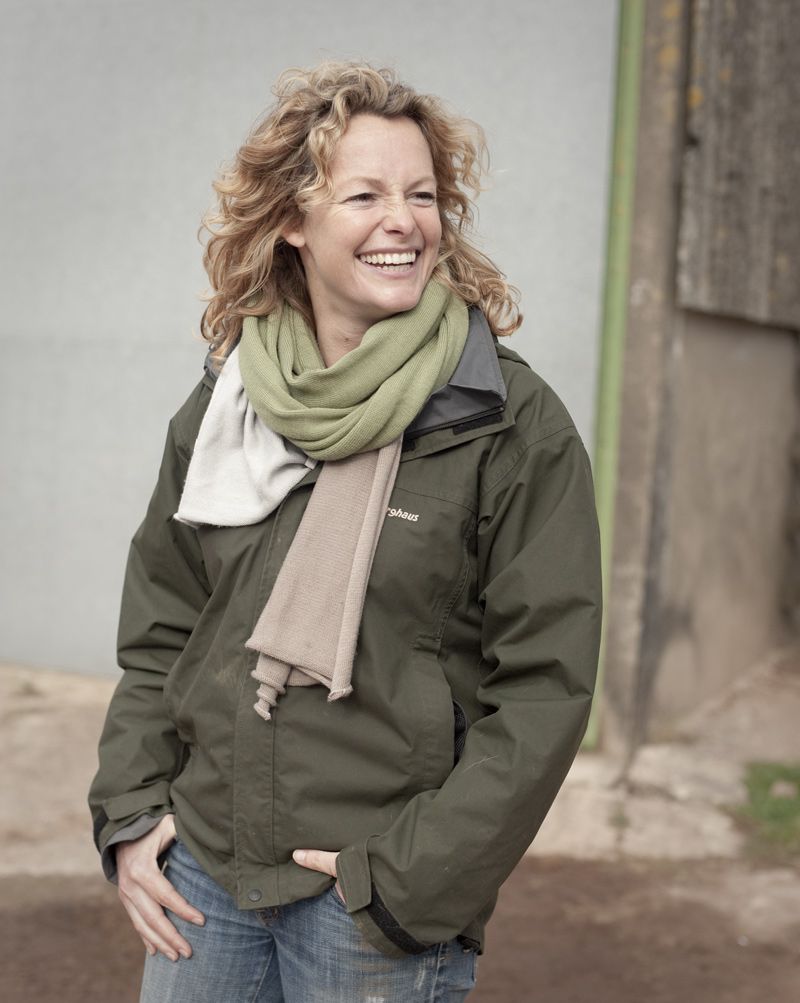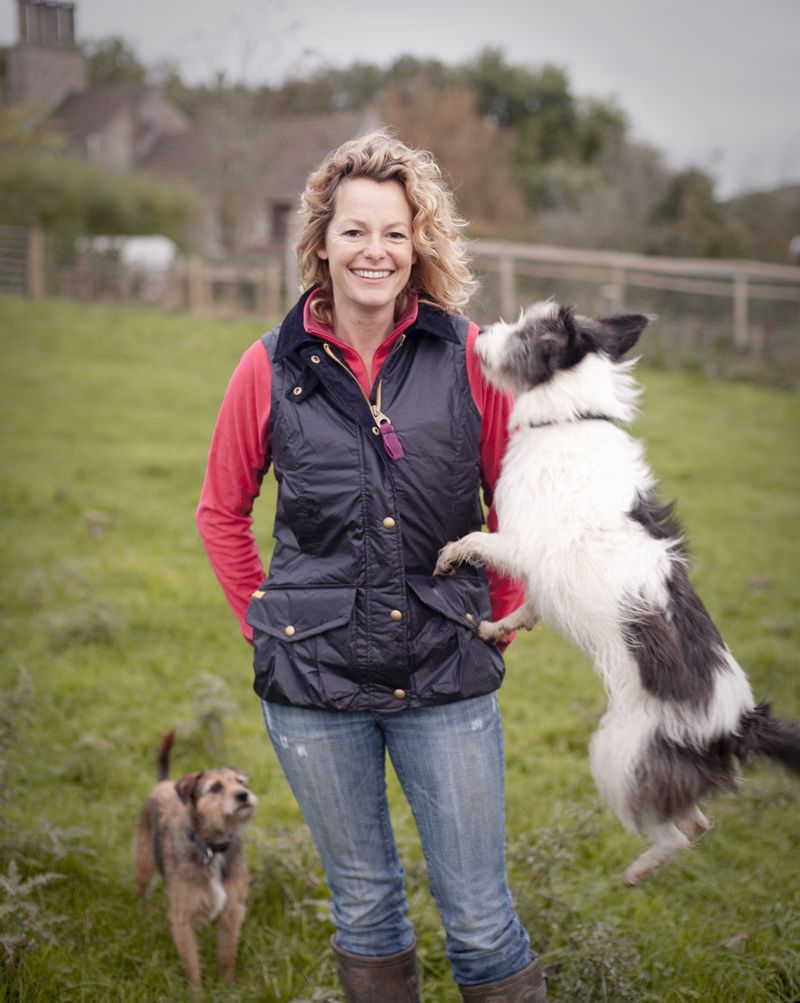Eleven years ago, Kate Humble discovered a passion for daily walks after relocating to rural Wales. As she releases her new book, ‘Thinking on My Feet’, the TV presenter explains how putting one foot in front of the other is nature’s own therapy…
As I ride the bus across Waterloo Bridge, London, to meet Kate Humble at her publisher’s riverside HQ, I’m feeling guilty. It’s less than nine hours since I put down Kate’s book Thinking On My Feet, a read dubbed “enticing” by the explorer Sir Ranulph Fiennes – a verdict with which I agree.
The book tells the story of the TV presenter’s walking year, a narrative of her favourite walks – many near her home in the Wye Valley, Wales – and her feelings throughout. In Kate’s words, it’s a celebration of “the simple, fundamental act of walking, the remarkable effect it has on our minds and bodies”. So why, with just one and a half miles to travel to our meeting, am I on the 172? I should have got up earlier, should have caught an earlier train to London, should have resisted the idle route.

Photography | Clare Richardson
“All the medical advice says we should walk more, but as soon as you put ‘should’ into a sentence, you find yourself instantly rebelling,” smiles Kate who, having greeted me with coffee and coconut biscuits, has hushed my admission of laziness with kind empathy.
Born and raised in Bray, Berkshire, she spent 20 years on the London treadmill, before jumping off 11 years ago and relocating to Wales with her husband, Ludo Graham.
“In London, most days would start with a walk, but it would be a frantic rush to the tube or bus,” recalls Kate. “Now, when I come back to London, I shape my day so that I have a walk first thing, that isn’t just about going to the bus. It’s conscious ‘me time’ – a little present to myself. Rather than go out at lunchtime and think ‘my treat is to buy a lipstick’, my treat is to give myself 15 minutes of wandering. Whatever it is you enjoy – walking, painting, sewing or cooking – it’s about giving yourself time for a little bit of mindfulness in your day, where you can think about yourself, and where you’re at emotionally.”
For Kate, walking comes as naturally as breathing. Every day, come rain or shine, after tending to the animals on her working farm, she heads out with her dogs Badger, Bella and Teg, for an hour-long stomp in the countryside.
“There is something really wonderful about being part of the world when it’s waking up, and being the first person to put footprints across the dew, there’s something deeply therapeutic about the rhythm of putting one foot in front of the other,” she explains.
“My brain quietly wakes up. I can almost hear my synapses crackling when I walk. Then, whether I’m rushing off for work or sitting in front of my computer, I feel a little bit exercised, and so my endorphins have woken up. It puts me into a good frame of mind.”
During research for her book, Kate consulted with neuroscientist Susan Greenfield, author of A Day in the Life of the Brain, who confirmed that walking in natural environments has profound mental benefits.
“What walking does to the brain, to your ability to be able to concentrate, your attention span – it is good for us,” insists Kate, pointing out the creative benefits of conducting work meetings and school lessons in the great outdoors.
“If you’re trying to come up with a creative solution to something, do it on foot. If I was the Education Secretary, things would change. Think about how stultifying it is being within four walls when you’re a young mind. Young brains should be learning outside. They’d remember everything because their attention spans would be fired up.”
The same goes for therapy. Like Freud, who analysed many of his clients while pounding Vienna’s pavements, a growing number of therapists believe in the combined power of walking and talking. Not only does physical exercise release oxytocin, the stress-busting hormone, but apparently being outside promotes more expansive thinking. Towards the end of the book, Kate travels to New York to meet Kentucky-born psychotherapist Clay Cockrell, who runs the majority of his therapy sessions from pathways around Central Park.
“Clay says that if you’re walking, it’s a very non-confrontational way of having a conversation – you don’t have to look someone in the eye, you can have very natural pauses, and talk about personal things without feeling judged,” says Kate. “When you’re face to face with someone you can get terribly self-conscious, but not if you’re talking in neutral territory.”
While Kate has never sought therapy herself (“I count myself extremely lucky”), she admits she is prone to anxiety, especially when she feels her true “self” is being compromised. One memorable occasion was in 2009 during a meeting at the BBC to discuss an invitation to compete in Strictly Come Dancing.
“The minute I sat down, my palms broke out in a sweat at the thought of the make up and frocks. I was a knot of anxiety,” recalls Kate. “I’m quite self-aware. I understand things that make me miserable or uncomfortable: big gatherings of people, or if I need to be very formally dressed. I know what my limitations are.
“There will always be something in life that makes me anxious, nervous, or just plain unhappy – that is part of life. The problem with modern life is we never have time to put anything into perspective, to take a step back and reflect from a slight distance.”
For Kate, that perspective is often achieved in the fresh air.
“Often by walking, I can pinpoint the root of that anxiety and that won’t immediately cure it but, my god, it helps because you feel more in control. Because I’ve been able to get rid of all the extraneous stuff and recognise it, I can now start to deal with it.”

Photography | Clare Richardson
One of the most moving stories in Kate’s book is that of Sam Doyle, a former soldier from Rossendale, Lancashire, who was left with PTSD after a tour of Afghanistan at the age of 21. He turned to drink and drugs, attempted suicide three times, and in 2017 decided to start again, by walking the entire British mainland coastline.
“For the first month he hated every day,” says Kate. “He said the walking was like a self-inflicted punishment, and he wanted drugs, but he kept going.
Gradually, he met people along the way who wanted to know his story, and a
charity called PTSD Resolution asked him to walk to raise money for them. We all need a reason to get up in the morning, and suddenly Sam had a really good one. By month three, walking had become a joy.”
A few weeks before we meet, Kate reached out to Sam to share her news that Thinking On My Feet was almost complete. She discovered that after backpacking for almost a year, he has hung up his walking boots and is living in Argyleshire, Scotland, with his girlfriend, who is expecting a baby.
“Sam is one of the most inspiring young men I’ve ever met. He made me realise that every human, even when they’ve got to the lowest depths, has the capacity – if they have the gumption – to find something to make them smile again. It took Sam months, but he found it.”
Last year Kate had her own personal triumph: hiking alone for nine days, covering 150 miles through the Wye Valley – a walking challenge that her friend Sir David Attenborough accomplished some 74 years ago with a companion.
“When I finished the book, I sent [David] an uncorrected proof and he wrote back saying: ‘I suspect I’m going to feel a little bit inadequate reading it, because I don’t think I could have done it on my own,’” says Kate. “What nonsense. That man can do anything!”
During her one-woman trial, which nearly ended prematurely on day three because of crippling blisters on her feet, Kate relished feeling self-sufficient, but says walking alone never makes her feel lonely.
“Solitude is very different to loneliness, because you choose solitude. For me, walking emboldens me for the day, it makes me feel more robust. I get time to myself to work out who I am and what I think. It’s that idea of strapping on your identity again.”
As I bid Kate farewell and step out on to London’s Embankment, I button up my coat and begin to walk. The 172 can wait.
‘Thinking On My Feet’, by Kate Humble, is published by Aster (£20, hardback)


Comments